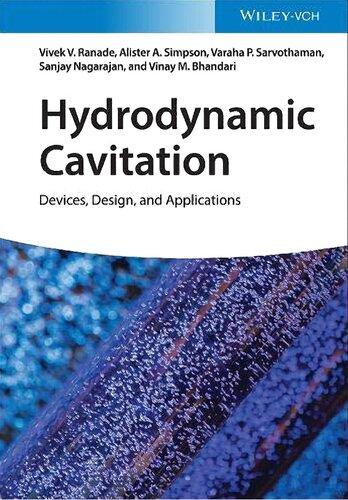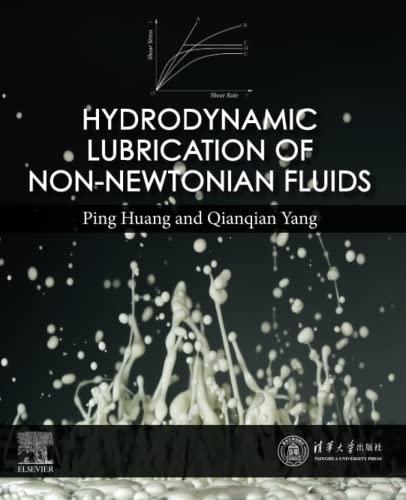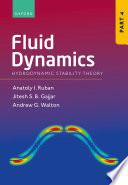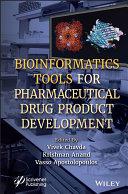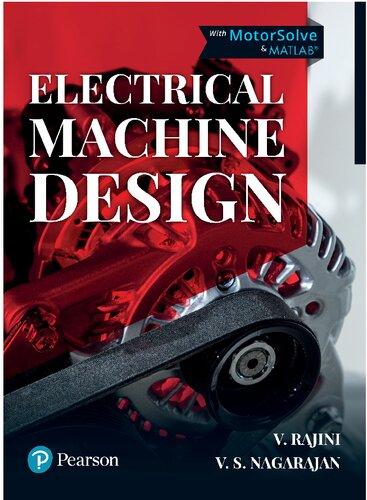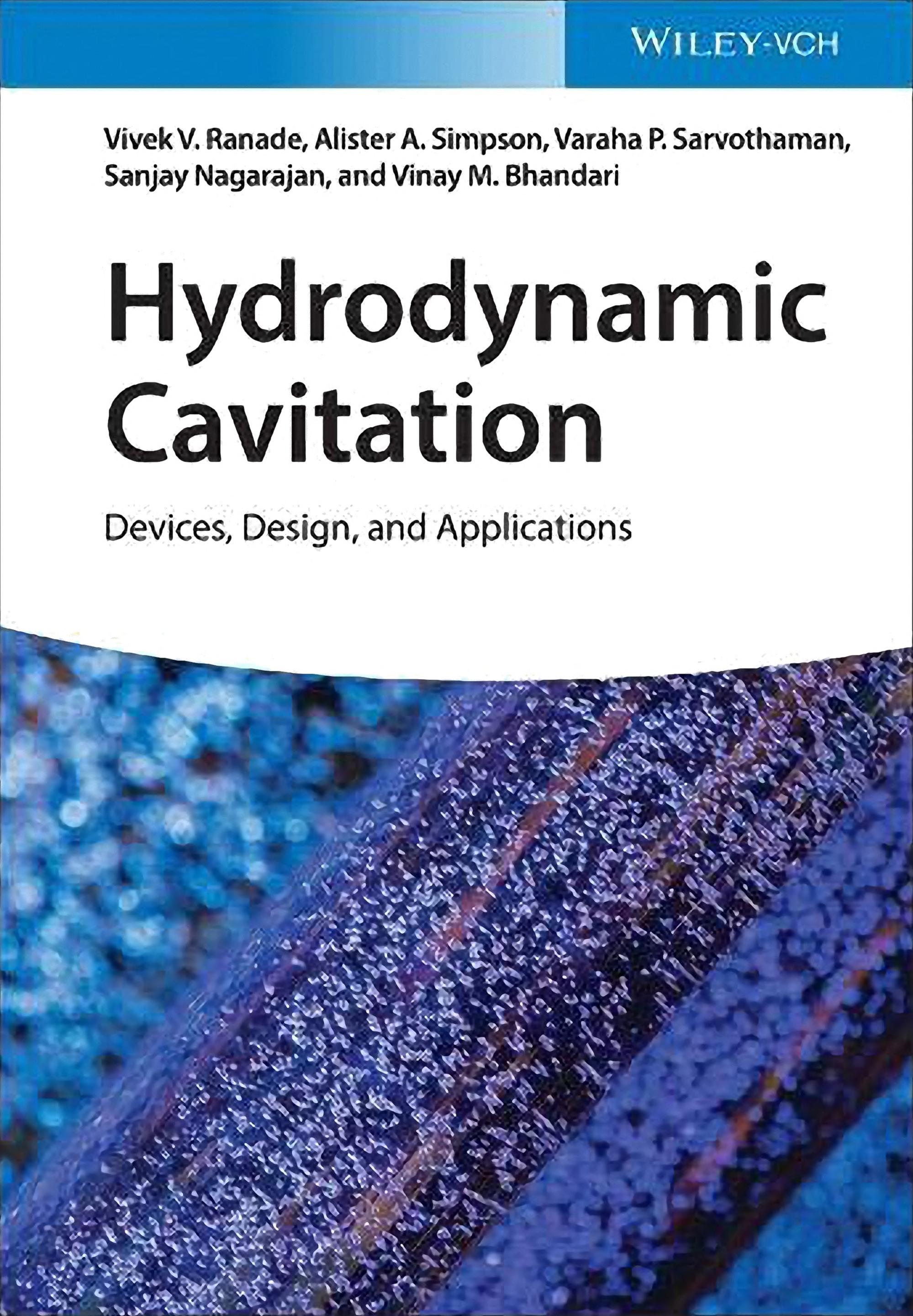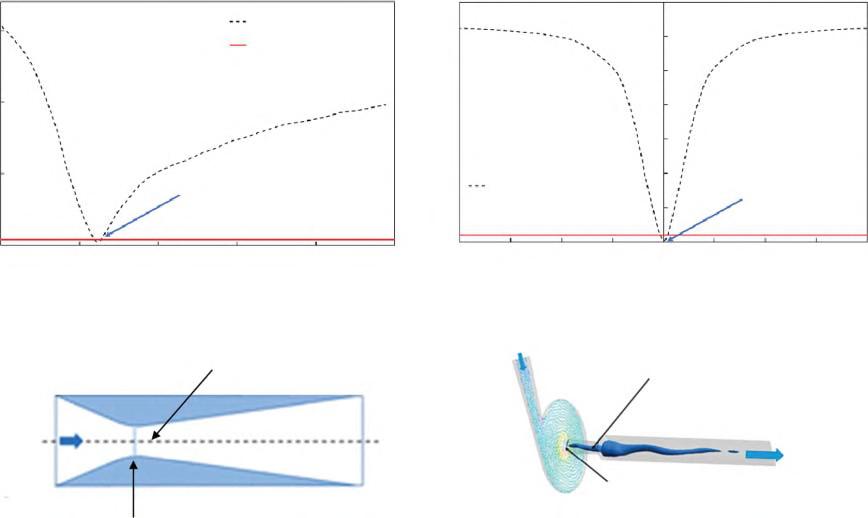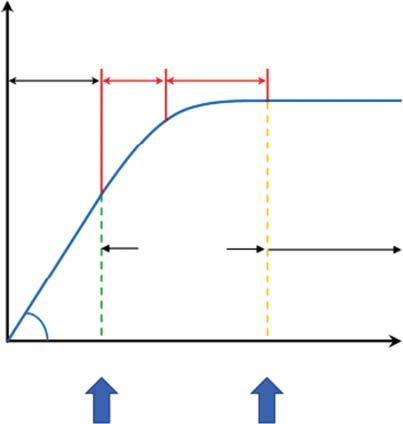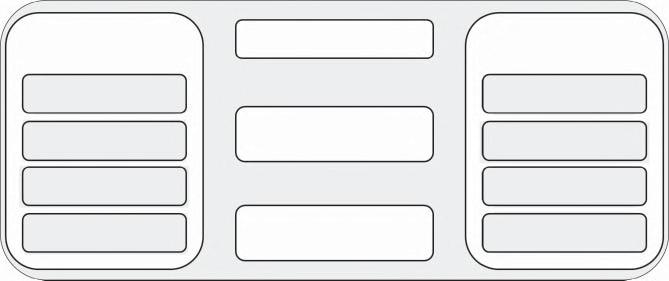Hydrodynamic Cavitation Vivek V. Ranade
Visit to download the full and correct content document: https://ebookmass.com/product/hydrodynamic-cavitation-vivek-v-ranade/
More products digital (pdf, epub, mobi) instant download maybe you interests ...
Hydrodynamic Lubrication of Non-Newtonian Fluids Ping
Huang https://ebookmass.com/product/hydrodynamic-lubrication-of-nonnewtonian-fluids-ping-huang/
An Introduction to Programming through C++ Abhiram
Ranade
G.
https://ebookmass.com/product/an-introduction-to-programmingthrough-c-abhiram-g-ranade/
Fluid Dynamics Part 4: Hydrodynamic Stability Theory
Anatoly Ruban
https://ebookmass.com/product/fluid-dynamics-part-4-hydrodynamicstability-theory-anatoly-ruban/
Sanctuary V. V. James
https://ebookmass.com/product/sanctuary-v-v-james/
Bioinformatics Tools for Pharmaceutical Drug Product Development 1st Edition Edition Vivek Chavda
https://ebookmass.com/product/bioinformatics-tools-forpharmaceutical-drug-product-development-1st-edition-editionvivek-chavda/
X-Ray Fluorescence in Biological Sciences: Principles, Instrumentation, and Applications Vivek K. Singh
https://ebookmass.com/product/x-ray-fluorescence-in-biologicalsciences-principles-instrumentation-and-applications-vivek-ksingh/
Electrical Machine Design V. Rajini
https://ebookmass.com/product/electrical-machine-design-v-rajini/
Cognitive Operations Konstantinos V. Katsikopoulos
https://ebookmass.com/product/cognitive-operations-konstantinosv-katsikopoulos/
Decidete Hoy Sergio V. Collins
https://ebookmass.com/product/decidete-hoy-sergio-v-collins/
Hydrodynamic Cavitation
Hydrodynamic Cavitation
Devices, Design, and Applications
Vivek V. Ranade
Vinay M. Bhandari
Sanjay Nagarajan
Varaha P. Sarvothaman
Alister T. Simpson
Authors
Professor Vivek V. Ranade University of Limerick Bernal Chair of Process Engineering Limerick V94 Ireland
Dr. Vinay M. Bhandari
CSIR – National Chemical Laboratory
Dr. Homi Bhabha Road Pune 411008 India
Dr. Sanjay Nagarajan University of South Wales Sustainable Environment Research Centre 9Graig Fach Pontypridd CF37 4BB UK
Dr. Varaha P. Sarvothaman Queen’s University Belfast School of Chemistry and Chemical Engineering 39 Stranmillis Road Belfast BT95AG UK
Dr. Alister T. Simpson Wilde Analysis Ltd. Whitworth House, 28 Charles Street Stockport, Cheshire SK1 3JR UK
Cover Image: © acceptfoto/Getty Images
All books published by WILEY-VCH are carefully produced. Nevertheless, authors, editors, and publisher do not warrant the information contained in these books, including this book, to be free of errors. Readers are advised to keep in mind that statements, data, illustrations, procedural details or other items may inadvertently be inaccurate.
Library of Congress Card No.: applied for
British Library Cataloguing-in-Publication Data
A catalogue record for this book is available from the British Library.
Bibliographic information published by the Deutsche Nationalbibliothek The Deutsche Nationalbibliothek lists this publication in the Deutsche Nationalbibliografie; detailed bibliographic data are available on the Internet at <http://dnb.d-nb.de>
© 2023 WILEY-VCH GmbH, Boschstraße 12, 69469 Weinheim, Germany
All rights reserved (including those of translation into other languages). No part of this book may be reproduced in any form – by photoprinting, microfilm, or any other means – nor transmitted or translated into a machine language without written permission from the publishers. Registered names, trademarks, etc. used in this book, even when not specifically marked as such, are not to be considered unprotected by law.
Print ISBN: 978-3-527-34643-1
ePDF ISBN: 978-3-527-82287-4
ePub ISBN: 978-3-527-34645-5
oBook ISBN: 978-3-527-34644-8
Typesetting Straive, Chennai, India
Contents
Preface xi
Part I Introduction 1
1 Hydrodynamic Cavitation 3
1.1 Hydrodynamic Cavitation 5
1.2 Hydrodynamic Cavitation Devices 7
1.3 Applications of Hydrodynamic Cavitation 11
1.4 Organization of the Book 11 References 15
Part II Hydrodynamic Cavitation Devices 21
2 Hydrodynamic Cavitation Devices Based on Axial/ Linear Flow 23
2.1 Introduction 23
2.2 Orifice-Based Devices 24
2.3 Venturi-Based Devices 34
2.4 Enhancing Performance of Orifice/Venturi-Based Hydrodynamic Cavitation Devices 41
2.5 Summary and Outlook 44 Notations 45 Greek Symbols 45 References 45
3 Hydrodynamic Cavitation Devices Based on Rotational/Swirling Flows 49
3.1 Rotor-Stator Hydrodynamic Cavitation Devices 49
3.2 Vortex-Based Cavitation Devices 52
3.2.1 Vortex Cavitation 52
3.2.2 Vortex Models 53
3.2.3 Vortex Cavitation Devices 56
3.3 Devices Based on Combinations of Linear and Swirling Flows 59
3.4 Summary and Outlook 63 Notations 68
Greek Symbols 68 References 68
Part III Characterizing and Modeling of Cavitation Devices 71
4 Experimental Characterization of Hydrodynamic Cavitation Devices 73
4.1 Experimental Set-up for Characterization of Hydrodynamic Cavitation Devices 73
4.1.1 Holding Tank 74
4.1.2 Pump 76
4.1.3 Hydrodynamic Cavitation Device 78
4.1.4 Piping Arrangements/Fittings 79
4.1.5 In-line Sensors 79
4.2 Identification of Inception of Hydrodynamic Cavitation 80
4.3 Characterizing Overall Process Performance 84
4.4 Conclusions 89 Notations 90 References 90
5 Modeling of Hydrodynamic Cavitation-Based Processes 95
5.1 Introduction 95
5.2 Empirical Models 98
5.2.1 Pseudo-reaction Kinetics Model 98
5.2.2 Per-pass Performance Model 101
5.2.3 Data-Driven Models 104
5.3 Physics-Based Models 106
5.3.1 Cavity Dynamics Models 108
5.3.1.1 Model Equations Governing Single-Bubble Dynamics 109
5.3.1.2 Estimation of Generation of Hydroxyl Radicals 110
5.3.1.3 Estimation of Hammer Pressure/Jet Velocity Due to Collapse 111
5.3.1.4 Illustrative Results from Cavity Dynamics Models 112
5.3.2 Multi-scale/Multi-layer Models for Simulating Performance of Cavitation Processes 114
5.4 Modeling of Heterogeneous Systems Treated with HC 122
5.5 Summary and Outlook 125 Abbreviations 127 Symbols 128
Greek Symbols 130
Subscripts 130
Superscripts 131
5.A CFD Modeling of Cavitating Flows 131 References 136
Part IV Applications of Hydrodynamic Cavitation 145
6 Disinfection of Water 147
6.1 Introduction 147
6.2 Conventional Methods of Disinfection 149
6.2.1 Major Drawbacks in Continuing the Use of Conventional Methods 152
6.2.2 Emerging Newer Methods of Disinfection 153
6.3 Disinfection of Water by Cavitation 154
6.3.1 Cavitation Process Principle 154
6.3.2 Present Status 158
6.3.3 Hydrodynamic Cavitation and Cavitation Devices/Reactors 159
6.3.4 Kinetics of Disinfection in Hydrodynamic Cavitation 162
6.4 Hybrid Methods of Disinfection Involving Cavitation 165
6.4.1 Process Integration–Conventional 168
6.4.2 Cavitation with Hydrogen Peroxide Addition 168
6.4.3 Cavitation with Ozone Addition 169
6.4.4 Cavitation with Aeration or Oxygen 169
6.5 Hybrid Hydrodynamic Cavitation Technology Using Natural Oils 170
6.5.1 Mechanism of Disinfection in Hydrodynamic Cavitation- Conventional vs. Hybrid Processes 174
6.5.2 Effect of Temperature 176
6.6 Process Economics 177
6.6.1 Cost Comparison of Different Processes 177
6.6.2 Typical Cost Calculation for Vortex Diode as Reactor in Hybrid Process Using Natural Oils 178
6.7 New Developments and Future Potential 179
6.7.1 Applications in Drinking Water Treatment 179
6.7.2 Applications in Sewage Water Treatment 180
6.7.3 Applications in Ballast Water Treatment 181
6.8 Summary 183 References 184
7 Wastewater Treatment 193
7.1 Introduction 193
7.2 Hydrodynamic Cavitation for Wastewater Treatment 196
7.3 Performance of Hydrodynamic Cavitation-based Wastewater Treatment 201
7.3.1 Influence of Device Design 203
7.3.2 Influence of Operating Parameters 206
viii Contents
7.3.2.1 Inlet Concentration of Pollutant 206
7.3.2.2 Pressure Drop Across Cavitation Device 208
7.3.2.3 Downstream Pressure 209
7.3.2.4 Operating pH 210
7.3.2.5 Operating Temperature 213
7.3.2.6 Influence of Dissolved Gases/Sparged Gases 214
7.4 Enhancing the per-pass Performance: Augmentation by Hybrid Processes 217
7.4.1 Coupling of HC with AOPs Using Alternative Energy Sources 218
7.4.1.1 UV-assisted HC 218
7.4.1.2 Plasma-based HC 219
7.4.2 Coupling of HC with Chemical-based AOPs 220
7.4.2.1 Hydrogen Peroxide (H 2 O2 ) Treatment 221
7.4.2.2 Ozone (O3 ) Treatment 222
7.4.2.3 Peroxonation (Hydrogen Peroxide—H2 O2 + Ozone—O3 ) 224
7.4.3 Augmenting Hydrodynamic Cavitation by Catalyst-based AOPs 225
7.4.3.1 Fenton’s Process 225
7.4.3.2 Photocatalysis 226
7.5 Summary and Outlook 229 Notations 229 References 230
8 Pre-treatment of Biomass for Enhancing Biofuel Yields 239
8.1 Introduction 239
8.2 Hydrodynamic Cavitation for Enhancing Bioethanol Yield 244
8.3 Hydrodynamic Cavitation for Enhancing Biogas Production 250
8.3.1 Wastewater and Sludge 253
8.3.2 Lignocellulosic Biomass (LCB) 260
8.4 Net Energy Gains 264
8.5 Summary and Path Forward 269 Notations 271 Symbols 272 Abbreviations 272 References 273
9 Other Applications of Hydrodynamic Cavitation 283
9.1 Introduction 283
9.2 Gas–Liquid Applications 283
9.3 Liquid–Liquid Applications 289
9.3.1 Oxidative Desulfurization 289
9.3.2 Emulsification 294
9.3.3 Microalgal Oil Extraction 296
9.3.4 Transesterification of Oils to Produce Biodiesel 297
9.3.5 Food (Juice and Milk) Sterilization 300
9.4 Solid–Liquid Applications 301
9.4.1 Beer Brewing 301
9.4.2 Bioactive Compound Extraction 302
9.4.3 Particle Size Reduction 304
9.5 Summary, Outlook, and Conclusions 305 References 306
Part V Status and Path Forward 313
10 Summary and Outlook 315
10.1 Devices, Experimental Characterization, and Modeling of Hydrodynamic Cavitation 316
10.2 Applications of Hydrodynamic Cavitation 323 Notations 330 References 330 Index 335
Preface
The first author (VR) was introduced to hydrodynamic cavitation while researching on fluidic devices needed for the nuclear industry while working at CSIR—National Chemical Laboratory (NCL), Pune, India. The focus then was on avoiding hydrodynamic cavitation. Later, VR got involved in a large project on ballast water treatment being carried out in a sister CSIR Laboratory in Goa, India. That was the beginning of his work on harnessing hydrodynamic cavitation for beneficial applications. The work resulted in a patent on a new family of vortex-based hydrodynamic cavitation devices (US patent 7585416, 2009). VR then teamed up with VB and together they developed applications of hydrodynamic cavitation for water treatment at CSIR-NCL. The work resulted in an edited book entitled Industrial Wastewater Treatment, Recycling, and Reuse in 2014. The research in those early years was more focussed on the development of applications using experiments. VR moved to Queen’s University Belfast in 2016 and started collaborating with SN, VS, and AS. Work prior to that had revealed significant gaps in understanding the basics of hydrodynamic cavitation and a lack of reliable predictive models for simulating and optimizing hydrodynamic cavitation devices and processes/applications based on those. That was the time we as a team realized that despite so many publications on hydrodynamic cavitation, there is no single source which presents the basics of hydrodynamic cavitation and links those with the device design and applications. The challenges we faced in understanding and quantitatively simulating hydrodynamic cavitation devices as well as in using the developed understanding and models for applications motivated us to develop this book.
Hydrodynamic cavitation which generates locally extreme conditions while operating under bulk ambient conditions has been harnessed for realizing numerous beneficial physicochemical transformations and innovative products. Hydrodynamic cavitation has also been used for intensifying a wide range of processes. Despite the intense research and a handful of start-up companies, the full potential of hydrodynamic cavitation is not yet realized. It is therefore essential to develop a thorough understanding, suitable devices and appropriate models for enabling process innovations and translating laboratory research to practice. Several excellent reviews and a few books on hydrodynamic cavitation are available. However, we felt that there is a need for a compiled resource that bridges the gap between device
design, experiments, models, and practice. The proposed book is aimed at filling this void.
We have made an attempt to provide a systematic basis for (i) the design of hydrodynamic cavitation devices, (ii) the design of experimental setup and procedures for investigating different applications, and (iii) developing computational models for interpreting and simulating experiments and facilitating translation to practice. In the next part of the book, three major applications of hydrodynamic cavitation namely, water disinfection, water treatment, and biomass pre-treatment are discussed. A brief summary of few other applications of hydrodynamic cavitation is provided as well. The goal of the this part was to illustrate the development of applications of hydrodynamic cavitation. An attempt is made to convey general guidelines, so that the book is useful even for applications not presented here. Our comments on the state of the art and future prospects are included at the end. We hope that this book will stimulate further work in this very important area from an industrial as well as from a scientific point of view.
The intended users of this book are chemical and process engineers working in chemical and allied industries and industrial R&D laboratories as well as researchers and research students working on realizing process innovations and productivity enhancements. Hydrodynamic cavitation offers an attractive technology platform which may be used to realize significant improvements in productivity while reducing energy consumption. The book will be directly useful for researchers and practitioners working in water and bioenergy sectors. Some of the new applications discussed in the book like emulsions will be useful to harness hydrodynamic cavitation for producing high-value products. We hope that the material included in this book will be useful in several different ways and at various stages of process innovations projects involving hydrodynamic cavitation. Some prior background in fluid mechanics, transport phenomena, and reaction engineering is assumed for readers. It may be used as a basic resource of methodologies for investigating hydrodynamic cavitation devices and processes. The content may also be useful as study material for an in-house course, or as a companion book while solving practical problems in applying hydrodynamic cavitation. We hope that this book will help chemical and process engineers to realize the true potential of hydrodynamic cavitation.
Several students, associates, collaborators, and funding institutes have contributed to the research that has led to this book. We are grateful for their support. VR would like to acknowledge the support provided by the Queen’s University of Belfast and the University of Limerick for his research on hydrodynamic cavitation. VR would also like to acknowledge various funding agencies such as the Council of Scientific and Industrial Research (CSIR), India; Department of Biotechnology, India; Innovate UK; BBSRC, UK, Science Foundation of Ireland for supporting his research on hydrodynamic cavitation. VR would like to thank Ansys Inc. for supporting his CFD work at the University of Limerick via academic partnership. VR would like to thank his wife, Dr Nanda Ranade for carefully reading the entire manuscript and providing suggestions to enhance the clarity of the presentation. VB would like to acknowledge and thank the support from CSIR and the Department of Science and Technology,
Preface xiii
India for their financial support to various projects. VB also expresses his profound gratitude to Prof. V.A. Juvekar for being a constant source of inspiration in research. VB would like to thank Ms. Maya Mane, Ms. Divya Dixit and Dr. Kshama Balapure for the development of SWASTIIK Technology (Safe Water and Sustainable Technology Initiative from Indian Knowledgebase). We also wish to thank the editorial team at Wiley for their patience and understanding during the long process of developing this book.
The book project took much longer than what was anticipated. Partly it may be blamed on the COVID-19 pandemic. Such a long, arduous and demanding project is impossible to complete without wholehearted support from the family. VR wishes to acknowledge his wife Nanda for her patience, understanding, and enthusiastic support. VB wishes to acknowledge the support from his parents and his son, Omkar. SN would like to acknowledge the support of his wife Eswarimeena for her understanding and support. SN would also like to acknowledge his daughters Saiseerthi and Keerthi for keeping him always on his toes. VS wishes to acknowledge the support and encouragement received from his wife Namana, parents—Shanthi and Sarvothaman, and friends—Shekhar, Sebastien, Gunjan, and Shubham during this book project.
January 2022
Vivek V. Ranade, Limerick, Ireland
Vinay M. Bhandari, Pune, India
Sanjay Nagarajan, Pontypridd, UK
Varaha P. Sarvothaman, Belfast, UK
Alister T. Simpson, Belfast, UK
Part
I Introduction
1.2 Hydrodynamic Cavitation Devices
Hydrodynamic cavitation devices can be broadly classified into two types, namely, with and without moving parts (Figure 1.3). Devices with moving parts usually involve a rotor – an impeller rotating at high speed and a stator with a small clearance between rotor and stator. The surface of rotor or stator may have dents or dimples of appropriate size, shape and depth which facilitate generation of low pressure regions and consequently, cavitation. The inception and extent of cavitation depends on specific configuration of rotor – stator, rotating speed and net flow rate of liquid through the device. See for example Petkovšek et al. [56] and Garlicka et al. [57]. Rotor–stator based cavitation devices are expensive, energy intensive and require maintenance leading to higher operational costs. Despite the limitations, rotor-stator based devices have been proposed and used for wastewater treatment [58] and for biomass pre-treatment [59].
Hydrodynamic cavitation devices without any moving parts are designed to generate low pressure zones within the device by manipulating the flow field. Typically, realizing high velocity zones by virtue of geometric configuration of device generates desired low pressure. Broadly speaking, such passive hydrodynamic cavitation devices either use small constrictions and linear flow through these constrictions or use strongly swirling flows for generating low pressure regions. Typical examples of such devices and corresponding pressure profiles are shown schematically in Figure 1.4. The presence of small constrictions used in linear flow based device may
8 1 Hydrodynamic Cavitation
Hydrodynamic cavitation devices
With moving parts
Rotor – stators
Moving parts – frequent maintenance
Capital intensive
High energy consumption –high operating costs
Without moving parts
Based on linear flows Based on swirling flows
Orifice/venturi
Cavitation along walls –device erosion
Constrictions present –susceptible to clogging
High pressure drops needed – high operating costs
Vortex diode/in-line swirler + orifice/venturi
Cavitation away from walls – shielding from erosion
No moving parts – no maintenance required
Less risk of clogging early inception of cavitation
Figure 1.3 Classification of hydrodynamic cavitation devices.
pose a risk of clogging when handling liquids containing suspended solids (which is not uncommon for many wastewater or other biomass pre-treatment applications). In such devices, the cavitation bubble collapse occurs near the walls and therefore devices are susceptible to erosion [38]. Swirling flow based devices developed by Ranade et al. [61] overcome some of these disadvantages. In these vortex based devices, the flowing fluid enters the circular chamber tangentially, leading to a free vortex flow. When the free vortex is converted to a forced vortex at the axial port exit, cavitation is generated. The mode of generation of cavities in vortex based devices involve a swirl flow and therefore does not require very small constrictions and generate cavities in the core of the flowing liquid [38]. Such devices are much less susceptible to clogging than conventional orifice or venturi based devices. More importantly, the cavity collapse occur in the vortex core of the flowing fluid. This naturally shields the device walls from erosion. It is also possible to develop passive hydrodynamic cavitation devices by combining swirling and linear flows. For example, a commercially available cavitation device, Dynaswirl [62] or use of inline swirlers by Simpson and Ranade [38]. However, such devices still are based on small constrictions and therefore may inherit some of the disadvantages of conventional linear flow based devices.
Newer hydrodynamic cavitation devices are being developed and several attempts are being made to commercialize these devices. For example, Biobang/Cavimax (www.biobang.com) is commercializing rotor – stator based devices, HyCa Technologies (www.hycator.com) is commercializing linear flow based devices, VIVIRA Process Technologies (www.vivira.in) is commercializing vortex diode as well as hybrid devices based on in-line swirler designs. It is important to develop systematic basis for comparing such different devices.
Apart from the geometric configuration of the hydrodynamic cavitation devices, selecting an appropriate range for operation is also important. In all such hydrodynamic cavitation devices, the inception of cavitation occurs at a certain flow rate which is a function of device design, characteristic of liquid, presence of suspended solids or dissolved gases and operating temperature. As the flow rate increases,
Dimensionless axial distance (–)
Collapse of cavities in the diverging section
x
pressure region, generation of cavities
Collapse of cavities in the axial nozzle
cavities
Low pressure region, generation of cavities
in linear flow based cavitation device and swirling flow based cavitation device (Source: Adapted from [38, 60]).
Figure 1.4 Pressure profile
Hydrodynamic Cavitation
Flow velocity (or cavitation intensity after incipient cavitation)
Cavitation free region
Effective working region
Noneffective working region
Cavitation increasing region Choke cavitation region
Figure 1.5 Different cavitation regimes as a function of flow rate or energy input (Source: From [37]/with permission of Elsevier).
Energy input
Incipient cavitation Choke cavitation
extent of cavitation increases up to a certain limit. Beyond a certain threshold, choked cavitation is realized. This is schematically shown in Figure 1.5. For appropriate selection of geometric configuration and operating conditions of hydrodynamic cavitation devices, it is essential to develop an ability to quantitatively simulate cavitating flows in such devices and thereby estimate overall process performance, facilitate optimisation and scale-up. Development of computational models for simulating performance of cavitation devices is not straight forward primarily because of existence of a wide range of spatio-temporal scales (single cavity with characteristic scales of ∼10 6 m, ∼10 4 s to cavitation device scale of ∼100 m, ∼100 s). Different types of models have been proposed and used in previous studies. Flow models range from a single cavity (for example, Gireesan and Pandit [63], Pawar et al. [64], and Pandit et al. [32]) to device scale computational fluid dynamics models (for example, Simpson and Ranade [65]). For estimating overall performance, typically reaction engineering models are used (Holkar et al. [6], Ranade and Bhandari [7], and references cited therein). Many such studies use and report pseudo-first order rate constants to describe performance of hydrodynamic cavitation process/device (for example, Rajoriya et al. [66], Capocelli et al. [67], and Saharan et al. [68]). Use of such a pseudo-rate constant which is a function of cavitation device configuration, operating conditions and number of passes through cavitation device is rather misleading and cannot be used to compare different cavitation devices. Some attempts have also been made to develop empirical correlation of performance with design and operating parameters (for example, see Sharma et al. [69]). However, such correlations have very limited applicability considering a wide variety of devices being used in practice. Detailed multi-scale or multi-layer computational fluid dynamics (CFD) models may potentially help to develop an ability to make quantitative simulations of flow and performance of hydrodynamic cavitation devices. The previously
1.4 Organization of the Book 11
published studies on flow models may be broadly categorized into two groups: the first group focuses on detailed flow characteristics rather than performance of cavitation device/process (see for example, Ma et al. [70] and Hsiao et al. [71]). The second group focuses on simulating performance of cavitation devices using rather simplified CFD models (see for example, Capocelli et al. [72]). It is important to systematically present designs of hydrodynamic cavitation devices, experimental set-up required to evaluate performance of such devices and a suite of computational models useful for simulating hydrodynamic cavitation devices and processes based on those devices. In this book (Part 1), such an attempt is made. A brief introduction to applications of hydrodynamic cavitation is included in the following section.
1.3 Applications of Hydrodynamic Cavitation
As discussed earlier, hydrodynamic cavitation involves rapid phase change and generation of localized high pressure and temperature regions. Intense shear and high velocity jets as well as strongly oxidizing radicals are generated. These physico-chemical effects of cavitation can be harnessed for a variety of applications. Large number of studies reporting applications of hydrodynamic cavitation may be broadly classified into three groups as shown in Figure 1.6.
Several reviews listing these applications have been published. For example, see recent reviews by Tao et al. [73], Carpenter et al. [5], Albanese et al. [74], Holkar et al. [6], Panda et al. [75], Sun et al. [76] and Mancuso et al. [77]. Most of these reviews however primarily list various applications and provide only cursory information and therefore not very useful. Three major applications of hydrodynamic cavitation are wastewater treatment, water disinfection and pre-treatment of biomass. In this book, we have included dedicated chapters for these three applications. These primarily harness generation of oxidizing radicals as well as intense shear via cavity collapse. We have also summarized other applications. However, an attempt has been made to connect those applications of hydrodynamic cavitation to device design and wherever possible to modeling. The goal is not just to list the applications but provide adequate information to the reader so as to facilitate further work or implementation in practice. Each application, of course, will require corresponding domain knowledge and it is not possible to include all the intricacies with respect to numerous applications. However, an attempt is made here to present generic approach while discussing selected applications so that the approach may be adapted for applications not included in this book. The overall organisation of the book is briefly discussed in the following section.
1.4 Organization of the Book
The information in this book is organized to facilitate systematic understanding of hydrodynamic cavitation. The focus is on providing adequate framework for design of hydrodynamic cavitation devices, modeling of processes based on such
1 Hydrodynamic Cavitation
Applications of hydrodynamic cavitation
Turbulent shear/ high velocity jets/ hammer pressure
Particle breakage – nanoparticles, cavi-crystallization, enhanced solid –liquid mass transfer, enhanced leaching and extraction, cleaning of solid surface/catalyst surface
Droplet breakage – emulsions, nanoemulsions, enhanced liquid – liquid mass transfer, intensifying extraction and liquid – liquid reactions
Bubble breakage – nano and microbubble generation, enhanced gasliquid mass transfer
High pressure and temperature, rapid phase change
De-scaling of water
Thermal cracking of organics
Pyrolysis
Opening of ligno-cellulosic matrix –enhanced valorisation of biomass
Pasteurisation of milk, disinfection (partly because of intense shear and generated radicals)
Figure 1.6 Applications of hydrodynamic cavitation.
Part I: Devices, Experimental Characterization and Modeling
Chapter 3: Devices based on Swirling Flows
Chapter 1: Introduction
Strongly oxidising radicals, oxidation
Oxidation of organic pollutants – mineralization to CO2 and water: wastewater treatment
Depolymerisation and cleavage reactions by radicals
Intensifying reaction in water and on water
Part II: Applications of Hydrodynamic cavitation
Chapter 6: Disinfection of Water
Hydrodynamic cavitation
Chapter 2: Devices Devices, Design and Applications based on Axial Flows
Chapter 4: Experimental Characterization
Chapter 5: Modeling of HC based Processes
Chapter 10: Summary and Outlook
Figure 1.7 Organization of the book.
Chapter 7: Wastewater Treatment
Chapter 8: Biomass Pre-treatment
Chapter 9: Other Applications
devices (experimentally as well as computationally) and developing applications of hydrodynamic cavitation. We have restricted the scope of this book to primarily discuss hydrodynamic cavitation realized by passive devices (without any moving parts). The material in this book is organized mainly in two parts (see the overall structure shown in Figure 1.7).
The first part presents design aspects of hydrodynamic cavitation and the second part presents various applications. These two parts precede with this introductory chapter. The last chapter on summary and outlook is included after the second part.
The first part comprises four chapters. Chapter 2 covers flow characteristics of hydrodynamic cavitation devices based on linear or axial flows. This primarily includes two most widely used cavitation devices namely orifice and venturi. Over the years, significant experimental data and information on these two devices have been accumulated. This chapter presents detailed computational fluid dynamics based models to provide useful insights and discuss various key design parameters of such cavitation devices. Some of the disadvantages of these linear flow based devices are highlighted. Hydrodynamic cavitation devices based on swirling flows
1.4 Organization of the Book 13
are discussed in Chapter 3. The advantages realized by using swirling flows are highlighted. CFD models are used for bringing out key characteristics and key design parameters. Together these two chapters will provide adequate information on development and application of CFD models for simulating flow characteristics of hydrodynamic cavitation devices and clearly bring out the key design parameters. The presented discussion will not only be useful for further improvement and optimisation of devices discussed in this book, but will also be useful for developing new and better hydrodynamic cavitation devices.
Chapters 4 and 5 provide ways of experimentally characterizing various hydrodynamic cavitation devices and computationally modeling performance of processes based on cavitation devices, respectively. Key components of typical experimental set-up required to characterize and quantify performance of hydrodynamic cavitation devices are discussed in Chapter 4. Some of the common pitfalls in designing the experimental set-up are highlighted and recommendations to avoid these are included. The experimental investigations are mainly carried out to identify first inception of cavitation and then quantification of performance. Brief discussion on planning and executing such experiments on inception and quantification of performance is included. Specific recommendations are discussed. Chapter 4 and references cited therein will provide useful information for designing experimental set-up and carrying out experiments to characterize hydrodynamic cavitation devices.
Computational models for interpreting experimental data on performance of hydrodynamic cavitation devices and processes are discussed in Chapter 5. The processes based on hydrodynamic cavitation essentially use generated shear, localized hot spots, and hydroxyl radicals for realizing various physico-chemical transformations. Various approaches ranging from empirical models to rigorous multi-layer computational models for modeling hydrodynamic cavitation based transformation processes are discussed. Large number of studies use the empirical approaches – either based on effective rate constant or per-pass performance factor where these empirical parameters are obtained using the experimental data. These models are discussed in detail and compared with each other. A brief discussion on recently published studies about the possibility of developing Artificial Neural Networks (ANN’s) based models is also included. After discussing these empirical models, physics based models starting with a single cavity to multiphase applications based on hydrodynamic cavitation are presented. A need for simultaneous application of multiple modeling approaches is highlighted. Some comments on future outlook and further advances in modeling of hydrodynamic cavitation based processes are also included.
The second part of the book presents various applications of hydrodynamic cavitation. Three major applications namely disinfection of water, wastewater treatment and pre-treatment of biomass are discussed in Chapters 6, 7, and 8, respectively. Chapter 6 is dedicated to discuss investigations of hydrodynamic cavitation based disinfection of water. Safe drinking water is important to mankind and quality of life, thus the disinfection of water by efficient processes becomes pertinent. This chapter discusses the advantages that cavitation could offer over conventional techniques.
Hydrodynamic Cavitation
Here the possibility of the technology as a standalone process to break down harmful microorganisms is discussed. Studies which have investigated the possibilities to enhance the performance of the cavitation process with hydrogen peroxide, ozone and aeration are discussed. Recent investigations to enhance the cavitation based disinfection with natural oils are discussed. The discussion will be useful for harnessing hydrodynamic cavitation for the disinfection of water with no or minimal use of other chemicals.
Chapter 7 discusses the wastewater treatment application. Water serves many functions in manufacturing industries and eventually ends up as wastewater. The contaminated and pollutant containing wastewater may have significantly higher chemical oxygen demand (COD) than permissible limits. It is therefore essential to treat such wastewater for oxidizing pollutants/species causing higher COD.
Application of hydrodynamic cavitation which generates strongly oxidizing radicals for treating wastewater is discussed in Chapter 7. Published studies are critically reviewed to identify key process parameters and their influence on overall performance. These process parameters include operating temperature, pH, pressure drop across cavitation devices and initial COD levels. Possible ways of augmenting performance of hydrodynamic cavitation including use of aeration, addition of hydrogen peroxide or ozone and photocatalysis have also been briefly discussed. The discussion will be useful for developing intensified wastewater treatment processes based on hydrodynamic cavitation.
Application of hydrodynamic cavitation for enhancing valorisation of lignocellulosic biomass is discussed in Chapter 8. The key step in any such valorisation process of biomass is pre-treatment, which opens up complex lignocellulosic matrix and makes the cellulose and hemicellulose accessible for further chemical or biochemical process steps. Hydrodynamic cavitation can be used as a stand alone pre-treatment method or as a tool for intensifying other chemical based pre-treatments. Use of hydrodynamic cavitation for two key application areas namely bioethanol and biogas production is discussed. Key aspects are reviewed and influence of important process parameters on overall performance are brought out. The discussion will be useful for exploiting hydrodynamic cavitation for valorisation of a variety of complex biomass resources. Some comments on how hydrodynamic cavitation based bio-refineries may be developed are also included.
It is impossible to include every application of hydrodynamic cavitation in any book. Attempt is made here to present a generic approach towards development and optimisation of applications using hydrodynamic cavitation. Beyond these three major applications, additional applications are grouped by fundamental types such as gas–liquid, liquid–liquid and solid–liquid in Chapter 9. These applications namely floatation, oxidative desulphurization, emulsification, biodiesel production, cavi-crystallization and nano-particle generation are briefly reviewed. The key issues in the conventional processing are identified, the role of hydrodynamic cavitation is suggested, and the key studies in these application areas are provided as a directive to the reader.
In the last chapter of the book (Chapter 10), the current state of art on design of hydrodynamic cavitation devices and processes is summarized. A need for
developing better multi-scale models and multi-layer models is emphasized. Need to develop appropriate verification, validation and model calibration practices is discussed. The lessons learnt from our experience of applying computational flow modeling to hydrodynamic cavitation based processes are briefly summarized. Some comments on selecting right level of complexity and modeling approach are included. Availability of non-invasive sensors such as acoustic sensors, real-time data processing, advances in multiphase flow modeling and machine learning may open up opportunities for developing high-fidelity computational models of hydrodynamic cavitation based processes. Besides comments on design and modeling, some discussion on current trends and outlook on hydrodynamic cavitation based applications are included. We hope that this book provides a framework and useful guidelines for harnessing hydrodynamic cavitation for a wide range of applications.
References
1 Brennen, C.E. (2014). Cavitation and Bubble Dynamics. Cambridge University Press.
2 Shah, Y.T., Pandit, A.B., and Moholkar, V.S. (1999). Cavitation Reaction Engineering. Springer Science & Business Media.
3 Suslick, K.S., Mdleleni, M.M., and Ries, J.T. (1997). Chemistry induced by hydrodynamic cavitation. Journal of the American Chemical Society 119 (39): 9303–9304.
4 Li, S. (2015). Tiny bubbles challenge giant turbines: three gorges puzzle. Interface Focus 5 (5): 20150020.
5 Carpenter, J., Badve, M., Rajoriya, S. et al. (2017). Hydrodynamic cavitation: an emerging technology for the intensification of various chemical and physical processes in a chemical process industry. Reviews in Chemical Engineering 33 (5): 433–468.
6 Holkar, C.R., Jadhav, A.J., Pinjari, D.V., and Pandit, A.B. (2019). Cavitationally driven transformations: a technique of process intensification. Industrial and Engineering Chemistry Research 58 (15): 5797–5819.
7 Ranade, V.V. and Bhandari, V.M. (2014). Industrial Wastewater Treatment, Recycling and Reuse Butterworth-Heinemann.
8 Ga˛gol, M., Przyjazny, A., and Boczkaj, G. (2018). Wastewater treatment by means of advanced oxidation processes based on cavitation – a review. Chemical Engineering Journal 338: 599–627.
9 Sarvothaman, V.P., Nagarajan, S., and Ranade, V.V. (2018). Treatment of solvent-contaminated water using vortex-based cavitation: influence of operating pressure drop, temperature, aeration, and reactor scale. Industrial and Engineering Chemistry Research 57 (28): 9292–9304.
10 Sarvothaman, V.P., Simpson, A.T., and Ranade, V.V. (2019). Modelling of vortex based hydrodynamic cavitation reactors. Chemical Engineering Journal 377: 119639.
1 Hydrodynamic Cavitation
11 Suryawanshi, P.G., Bhandari, V.M., Sorokhaibam, L.G. et al. (2018). Solvent degradation studies using hydrodynamic cavitation. Environmental Progress & Sustainable Energy 37 (1): 295–304.
12 Patil, P.B., Bhandari, V.M., and Ranadec, V.V. (2021). Wastewater treatment and process intensification for degradation of solvents using hydrodynamic cavitation. Chemical Engineering and Processing Process Intensification 108485.
13 Gaikwad, V. and Ranade, V. (2016). Disinfection of water using vortex diode as hydrodynamic cavitation reactor. Asian Journal of Chemistry 28 (8): 1867.
14 Jain, P., Bhandari, V.M., Balapure, K. et al. (2019). Hydrodynamic cavitation using vortex diode: an efficient approach for elimination of pathogenic bacteria from water. Journal of Environmental Management 242: 210–219.
15 Mane, M.B., Bhandari, V.M., Balapure, K., and Ranade, V.V. (2020). A novel hybrid cavitation process for enhancing and altering rate of disinfection by use of natural oils derived from plants. Ultrasonics Sonochemistry 61: 104820.
16 Mane, M.B., Bhandari, V.M., and Ranade, V.V. (2021). Safe water and technology initiative for water disinfection: application of natural plant derived materials. Journal of Water Process Engineering 43: 102280.
17 Mane, M.B., Bhandari, V.M., Balapure, K., and Ranade, V.V. (2020). Destroying antimicrobial resistant bacteria (AMR) and difficult, opportunistic pathogen using cavitation and natural oils/plant extract. Ultrasonics Sonochemistry 69: 105272.
18 Suryawanshi, N.B., Bhandari, V.M., Sorokhaibam, L.G., and Ranade, V.V. (2016). A non-catalytic deep desulphurization process using hydrodynamic cavitation. Scientific Reports 6 (1): 1–8.
19 Suryawanshi, N.B., Bhandari, V.M., Sorokhaibam, L.G., and Ranade, V.V. (2017). Developing techno-economically sustainable methodologies for deep desulfurization using hydrodynamic cavitation. Fuel 210: 482–490.
20 Uebe, J., Kryževi ˇ cius, Ž., Januteniene, J. et al. (2021). Desulfurizing of pyrolysis oil of used tires using a 3D-printed vortex diode and modeling of process. Journal of Marine Science and Engineering 9 (8): 876.
21 Nakashima, K., Ebi, Y., Shibasaki-Kitakawa, N. et al. (2016). Hydrodynamic cavitation reactor for efficient pretreatment of lignocellulosic biomass. Industrial and Engineering Chemistry Research 55 (7): 1866–1871.
22 Terán Hilares, R., Ramos, L., da Silva, S.S. et al. (2018). Hydrodynamic cavitation as a strategy to enhance the efficiency of lignocellulosic biomass pretreatment. Critical Reviews in Biotechnology 38 (4): 483–493.
23 Nagarajan, S. and Ranade, V.V. (2019). Pretreatment of lignocellulosic biomass using vortex-based devices for cavitation: influence on biomethane potential. Industrial and Engineering Chemistry Research 58 (35): 15975–15988.
24 Maddikeri, G.L., Gogate, P.R., and Pandit, A.B. (2014). Intensified synthesis of biodiesel using hydrodynamic cavitation reactors based on the interesterification of waste cooking oil. Fuel 137: 285–292.
25 Malani, R.S., Shinde, V., Ayachit, S. et al. (2019). Ultrasound–assisted biodiesel production using heterogeneous base catalyst and mixed non–edible oils. Ultrasonics Sonochemistry 52: 232–243.
26 Albanese, L., Ciriminna, R., Meneguzzo, F., and Pagliaro, M. (2017). Beer-brewing powered by controlled hydrodynamic cavitation: theory and real-scale experiments. Journal of Cleaner Production 142: 1457–1470.
27 Pathania, S., Ho, Q.T., Hogan, S.A. et al. (2018). Applications of hydrodynamic cavitation for instant rehydration of high protein milk powders. Journal of Food Engineering 225: 18–25.
28 Díez, D., Urueña, A., Barrios, C., and Antolín, G. (2019). Valorization of rendering fats to produce biodiesel by single and multi orifice plate cavitation reactor. Waste and Biomass Valorization 10 (12): 3773–3780.
29 Didenko, Y.T., McNamara, W.B., and Suslick, K.S. (1999). Hot spot conditions during cavitation in water. Journal of the American Chemical Society 121 (24): 5817–5818.
30 Gogate, P.R. and Pandit, A.B. (2005). A review and assessment of hydrodynamic cavitation as a technology for the future. Ultrasonics Sonochemistry 12 (1–2): 21–27.
31 Rayleigh, L.V.I.I.I. (1917). On the pressure developed in a liquid during the collapse of a spherical cavity. The London, Edinburgh, and Dublin Philosophical Magazine and Journal of Science 34 (200): 94–98.
32 Pandit, A.V., Sarvothaman, V.P., and Ranade, V.V. (2021). Estimation of chemical and physical effects of cavitation by analysis of cavitating single bubble dynamics. Ultrasonics Sonochemistry 77: 105677.
33 Franc, J.-P. and Michel, J.-M. (2006). Fundamentals of Cavitation Springer Science & Business Media.
34 Ozonek, J. (2012). Application of Hydrodynamic Cavitation in Environmental Engineering CRC Press.
35 Gogate, P.R. and Pandit, A.B. (2004). A review of imperative technologies for wastewater treatment I: oxidation technologies at ambient conditions. Advances in Environmental Research 8 (3–4): 501–551.
36 Meijn, G.-J. (2015). Physical Modeling of Cavitation Using an Enthalpy Based Model Delft, The Netherlands: Faculty of Mechanical, Maritime and Material Engineering; Delft University of Technology.
37 Sun, X., Liu, J., Ji, L. et al. (2020). A review on hydrodynamic cavitation disinfection: the current state of knowledge. Science of the Total Environment 737: 139606.
38 Simpson, A. and Ranade, V.V. (2019). 110th Anniversary: comparison of cavitation devices based on linear and swirling flows: hydrodynamic characteristics. Industrial and Engineering Chemistry Research 58 (31): 14488–14509.
39 Barnaby, S.W. (1902). Torpedo-boat destroyers. Journal of the American Society for Naval Engineers 14 (2): 396–408.
40 Barnaby, S.W. (ed.) (1906). Note on the Cavitation of Screw Propulsion (Including Appendix). Thomas Telford-ICE Virtual Library.
41 Young, F.R. (1999). Cavitation. World Scientific.
42 Asaithambi, N., Singha, P., Dwivedi, M., and Singh, S.K. (2019). Hydrodynamic cavitation and its application in food and beverage industry: a review. Journal of Food Process Engineering 42 (5): e13144.
1 Hydrodynamic Cavitation
43 Gogate, P.R. and Kabadi, A.M. (2009). A review of applications of cavitation in biochemical engineering/biotechnology. Biochemical Engineering Journal 44 (1): 60–72.
44 Richards, W.T. and Loomis, A.L. (1927). The chemical effects of high frequency sound waves I. a preliminary survey. Journal of the American Chemical Society 49 (12): 3086–3100.
45 Vyas, S. and Ting, Y.-P. (2018). A review of the application of ultrasound in bioleaching and insights from sonication in (bio) chemical processes. Resources 7 (1): 3.
46 Sancheti, S.V. and Gogate, P.R. (2017). A review of engineering aspects of intensification of chemical synthesis using ultrasound. Ultrasonics Sonochemistry 36: 527–543.
47 Manickam, S., Sivakumar, K., and Pang, C.H. (2020). Investigations on the generation of oil-in-water (O/W) nanoemulsions through the combination of ultrasound and microchannel. Ultrasonics Sonochemistry 69: 105258.
48 Ojha, K.S., Mason, T.J., O’Donnell, C.P. et al. (2017). Ultrasound technology for food fermentation applications. Ultrasonics Sonochemistry 34: 410–417.
49 Wang, M. and Yuan, W. (2016). Modeling bubble dynamics and radical kinetics in ultrasound induced microalgal cell disruption. Ultrasonics Sonochemistry 28: 7–14.
50 Bystryak, S., Santockyte, R., and Peshkovsky, A.S. (2015). Cell disruption of S. cerevisiae by scalable high-intensity ultrasound. Biochemical Engineering Journal 99: 99–106.
51 Angelopoulos, C. (2018). Ultrasound in dentistry: toward a future of radiation-free imaging. Dental Clinics of North America 62 (3): 481–489.
52 Reissland, N., Francis, B., Kumarendran, K., and Mason, J. (2015). Ultrasound observations of subtle movements: a pilot study comparing foetuses of smoking and nonsmoking mothers. Acta Paediatrica 104 (6): 596–603.
53 Fernández-Lao, C., Cantarero-Villanueva, I., Galiano-Castillo, N. et al. (2016). The effectiveness of a mobile application for the development of palpation and ultrasound imaging skills to supplement the traditional learning of physiotherapy students. BMC Medical Education 16 (1): 1–7.
54 Ashokkumar, M. (2016). Advantages, Disadvantages and Challenges of Ultrasonic Technology. Ultrasonic Synthesis of Functional Materials, 41–42. Springer.
55 Sutariya, S., Sunkesula, V., Kumar, R., and Shah, K. (2018). Emerging applications of ultrasonication and cavitation in dairy industry: a review. Cogent Food & Agriculture 4 (1): 1549187.
56 Petkovšek, M., Mlakar, M., Levstek, M. et al. (2015). A novel rotation generator of hydrodynamic cavitation for waste-activated sludge disintegration. Ultrasonics Sonochemistry 26: 408–414.
57 Garlicka, A., Zubrowska-Sudol, M., Umiejewska, K. et al. (2020). Effects of thickened excess sludge pre-treatment using hydrodynamic cavitation for anaerobic digestion. Energies 13 (10): 2483.
58 Zhao, Z., Wang, L., Fan, J. et al. (2020). Degradation of indigo carmine by coupling Fe (II)-activated sodium persulfate and ozone in a rotor-stator reactor. Chemical Engineering and Processing Process Intensification 148: 107791.
59 Garuti, M., Langone, M., Fabbri, C., and Piccinini, S. (2018). Monitoring of full-scale hydrodynamic cavitation pretreatment in agricultural biogas plant. Bioresource Technology 247: 599–609.
60 Sarvothaman, V.P. (2020). Hydrodynamic Cavitation for Effluent Treatment: Using Vortex-Based Cavitation Devices. Queen’s University Belfast.
61 Ranade, V.V., Kulkarni, A.A., and Bhandari, V.M. (2016). inventors Vortex diodes as effluent treatment devices. Patent US9422952B2.
62 Dynaflow. Dynajets cavitating jets 2021. http://www.dynaflow-inc.com/Products/ Jets/Jets-Cavitating.htm.
63 Gireesan, S. and Pandit, A.B. (2017). Modeling the effect of carbon-dioxide gas on cavitation. Ultrasonics Sonochemistry 34: 721–728.
64 Pawar, S.K., Mahulkar, A.V., Pandit, A.B. et al. (2017). Sonochemical effect induced by hydrodynamic cavitation: comparison of venturi/orifice flow geometries. AIChE Journal 63 (10): 4705–4716.
65 Simpson, A. and Ranade, V.V. (2019). Flow characteristics of vortex based cavitation devices: computational investigation on influence of operating parameters and scale. AIChE Journal 65 (9): e16675.
66 Rajoriya, S., Bargole, S., George, S., and Saharan, V.K. (2018). Treatment of textile dyeing industry effluent using hydrodynamic cavitation in combination with advanced oxidation reagents. Journal of Hazardous Materials 344: 1109–1115.
67 Capocelli, M., Prisciandaro, M., Lancia, A., and Musmarra, D. (2014). Hydrodynamic cavitation of p-nitrophenol: a theoretical and experimental insight. Chemical Engineering Journal 254: 1–8.
68 Saharan, V.K., Badve, M.P., and Pandit, A.B. (2011). Degradation of Reactive Red 120 dye using hydrodynamic cavitation. Chemical Engineering Journal 178: 100–107.
69 Sharma, A., Gogate, P.R., Mahulkar, A., and Pandit, A.B. (2008). Modeling of hydrodynamic cavitation reactors based on orifice plates considering hydrodynamics and chemical reactions occurring in bubble. Chemical Engineering Journal 143 (1–3): 201–209.
70 Ma, J., Hsiao, C.-T., and Chahine, G.L. (2017). A physics based multiscale modeling of cavitating flows. Computers and Fluids 145: 68–84.
71 Hsiao, C.-T., Ma, J., and Chahine, G.L. (2017). Multiscale tow-phase flow modeling of sheet and cloud cavitation. International Journal of Multiphase Flow 90: 102–117.
72 Capocelli, M., Musmarra, D., Prisciandaro, M., and Lancia, A. (2014). Chemical effect of hydrodynamic cavitation: simulation and experimental comparison. AIChE Journal 60 (7): 2566–2572.
73 Tao, Y., Cai, J., Huai, X. et al. (2016). Application of hydrodynamic cavitation to wastewater treatment. Chemical Engineering and Technology 39 (8): 1363–1376.
